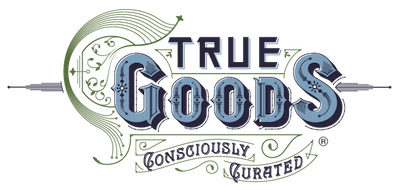Quite literally, these terms define what we do and how we do it. We consciously curate ‘the goods’ presented on our site, from editorial content and resources to the products we’re proud to carry. Eyes wide open, we hand pick a convenient selection of the safest, best-designed, most effective and socially responsible products.
Our experts in the areas of prevention, environmental health and clean living inform our product selection process, which always starts by putting our customers’ needs first and asking the question: “What products do people use the most ~ on, in and around themselves ~ and how can we discover only the safest, most effective versions of these?”
Finding goods to offer and companies we want to work with is not an easy task, in fact it’s difficult…very difficult. But our mission is to do the hard work so our customers don’t have to, and here’s how.
Step 1 ~ Do The Research
Not everyone wants to be an environmental detective, lead a watchdog group, advocate for massive social progress, or get a PhD in toxicology and nutritional science. That’s where we come in. Each member of our team takes on the heroic task of asking the tough questions and getting to the bottom of critical issues. Our editors and buyers stay up-to-date so what’s presented to you is truly the organic cream of the non-GMO crop.
Step 2 ~ Know Your Sources
Knowing who to trust and where to look is half the battle. Every ingredient and product under consideration is cross-referenced with the current research, insights and benchmarks developed and compiled by leaders in the field of clean living. In addition to our team of stellar advisors, some of our other go-to favorites include: MADE SAFE, Campaign for Safe Cosmetics, Cosmetic Ingredient Review, Women’s Voices for the Earth, Healthy Child Healthy World, Allergy Kids Foundation, Center for Environmental Health, Friends of the Earth, Non-GMO Project, Institute for Responsible Technology, Seafood Watch, Pesticide Action Network, Celiac Disease Foundation, EWG, and the European Commission’s Scientific Committees on Health, Environment and Consumer Safety.
Step 3 ~ Set The Standards
We’re constantly searching for the ethically sourced diamond-in-the-rough, the four-leafed clover of pesticide-free perfection, across all product categories. This pursuit is benchmarked against a proprietary reference guide we endearingly refer to as our ingredient ‘blacklist,’ which truly goes on and on. So here’s a short sampling of what’s not allowed in our products or on our shelves:
~ aluminum, ammonia, artificial colors/flavors/sweeteners, BHT, BPA, ceteareths, chlorine, coal tar, cocamidopropyl betaine, DEA, DEHP, dioxins, ethoxylates, flame retardants, formaldehyde, synthetic fragrance/parfum, high fructose corn syrup, Japanese honeysuckle extract, lead, malic acid, MDF, mineral oil, nitrosamines, oak moss, oxybenzone, octinoxate, parabens, PEG, PERC, petrochemicals, phthalates, polysorbate-20/40/60/80, polyurethane foam, propylene glycol, PVC, retinyl acetate/palmitate, sodium lauryl/laureth sulfate (SLS/SLES), talc, titanium dioxide, toluene, toxic glues/finishes/sealants, trans fats, triclosan, urea, VOC paints ~
Step 4 ~ Go Treasure Hunting
Most likely you won’t find the unique selection of products we carry all in the same place at the same time, except here at True Goods. That’s due to our non-negotiable safety standards, breadth and depth of supplier relations, and sharp eye for quality and design. From mattresses to manicures, we know what our customers are looking for and won’t stop until we find it for them.
Step 5 ~ Read The Fine Print
We always get a kick out of products claiming to be free of this toxin and that chemical. Our consistent response to these claims is this: “Fine and dandy, now tell us about what is in that product.” More often than not, it’s not good.
Step 6 ~ Safety Check
Eco-features and ‘green’ qualities are like icing on the cake. For us, safety is the first and most important checkpoint on all products. No safe, no pass – period. Because let’s be real, if there’s poison inside does recycling the bottle really matter?
Step 7 ~ Verify
We require all our suppliers to confirm that what’s written on the bottle is in fact what’s in the bottle. Same goes for how their products are made and with what materials. After all, there’s no arguing that bamboo cutting boards are great – just not when they’re held together with formaldehyde glue and toxic finishes!
